The McKay Lodge Conservation team travels far and wide maintaining outdoor bronze sculpture. The conservation treatments of outdoor bronze are sometimes at the lab facilities just outside of Cleveland but also range to the nation’s capitol in Washington D.C. and even throughout all U.S. territories.
The McKay Lodge Conservation team recently maintained an outdoor bronze sculpture by Martin Puryear, Bearing Witness, 1997, located in front of the Ronald Reagan Federal Building & International Trade Center in Washington, DC. The artwork is imposing as it ascends approximately 40 feet from the base of the plaza. It is fabricated from hammer-formed bronze plates attached with hot metal joins, and inside, there is a stainless steel armature.
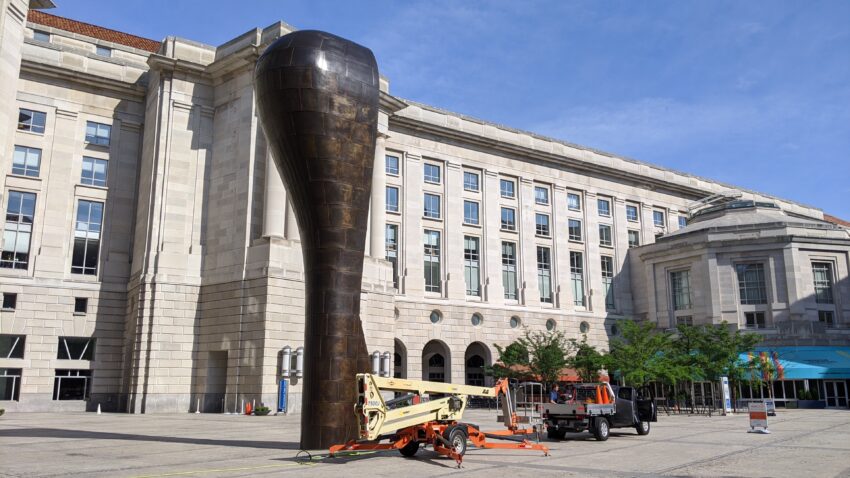
Despite the very public location of the artwork at the Ronald Reagan Federal Building & International Trade Center and exposure to outdoor elements, it was in very good condition overall. The bronze sculpture was still in need of maintenance as its existing protective wax coating, commonly used in art conservation to protect outdoor bronzes, was demonstrating signs of wear. These worn areas were seen on the very top and upward facing surfaces, but thankfully a regular waxing maintenance cycle prevented damage to the metal
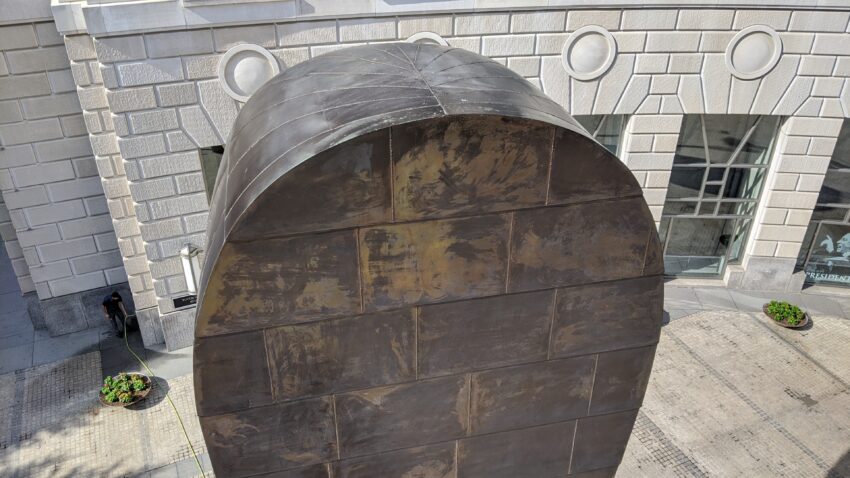
Limited scratches, inscribed graffiti, and other small damages at the base where visitors can contact the sculpture were also observed. These scratches were superficial, appearing to only impact the wax and did not penetrate the patina or metal. Such are also expected for a sculpture located in such a busy location.
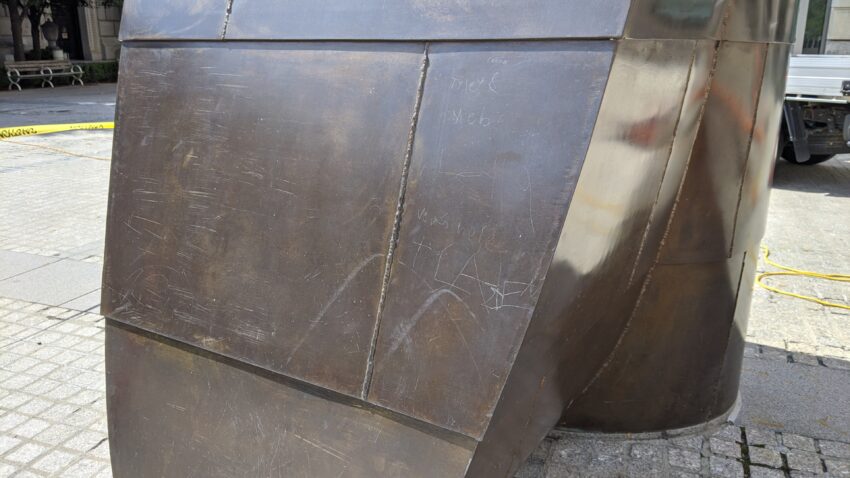
Since the sculpture is approximately four stories tall, a lift was required for maintaining the outdoor bronze sculpture. The first step was to remove dirt, failing wax, and any other remaining debris with pressurized water at 3,500 psi. While using a pressure washer might seem straight-forward to clean a surface, the tool can be very dangerous for works of art if the wrong psi or tip is used; the result can be irreversible damage.
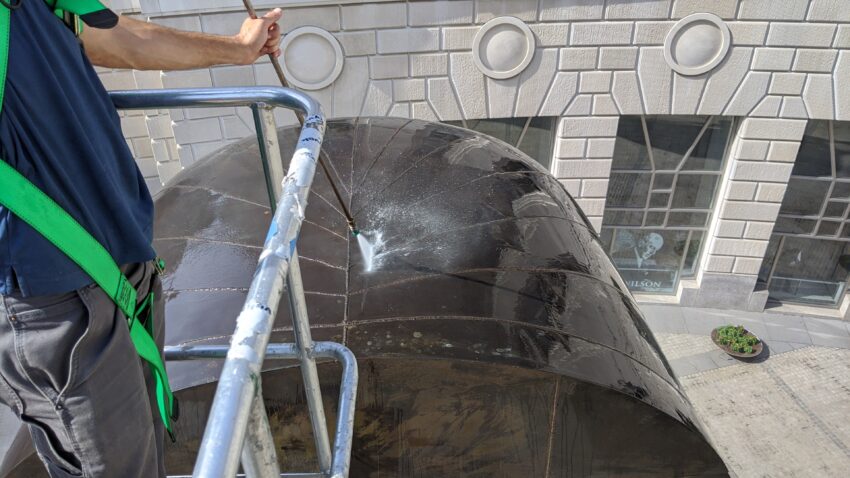
After carefully clearing the surface of soiling and any failed coating, the lower few feet (which suffers the most damage from visitors) was coated with a durable, but easily removable resin coating. The resin is harder than wax, but is not as easily maintained as a wax coating for this application; therefore, it was not used on the entire surface.

Once the resin solution fully dried, a paste wax was applied to the surface of Martin Puryear’s Bearing Witness using special brushes. The wax was allowed to dry then finished with power-buffers, producing the desired high-gloss surface.

After the maintenance of the outdoor bronze was complete, the substrate is better protected from the elements with a coating of wax and visitor interaction, and the color and sheen has improved.
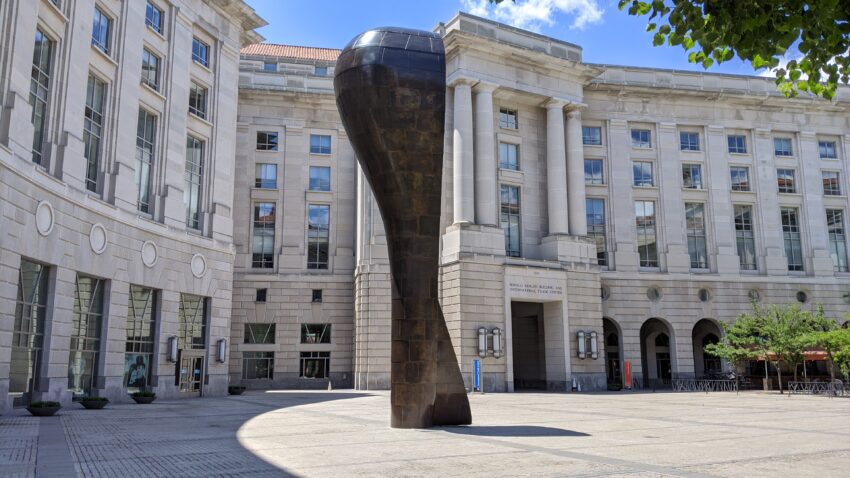
The location of Bearing Witness seems only fitting since the artist Martin Puryear was born in Washington, D.C. in 1941. He earned a Masters in Fine Arts from Yale University and soon began teaching and continuing to create works of art. Puryear eventually settled in the Hudson Valley of New York and has lived there since 1990.
Puryear is considered one of the most important American Sculptors, and recipient of many awards including, but not limited to: the 1982 Guggenheim Fellowship, a 1989 MacArthur Foundation Award, and the 2009 Gold Medal in Sculpture from the American Academy of Arts and Letters, and the National Medal of Arts by President Barack Obama.
